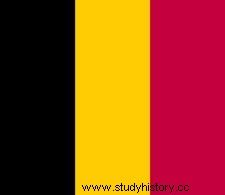Spanish Netherlands ( approx. 1579–1713), Spanish provinces in the southern part of the Netherlands (corresponds roughly to today's Belgium and Luxembourg).
 Read more about this topic Belgium:The Spanish Netherlands Under Spanish rule, discontent increased in the Netherlands and a revolution broke out in 1567, but unification between the South and the north...
Read more about this topic Belgium:The Spanish Netherlands Under Spanish rule, discontent increased in the Netherlands and a revolution broke out in 1567, but unification between the South and the north... Although the provinces of the Netherlands had chafed under foreign rule for a number of years and for many reasons, the uprising against Spain its Main impulse by the diligence of the members of emerging countries Calvinist movement. To quell their rebellion, Fernando Álvarez de Toledo y Pimental, Duke (Duke) de Alba was sent in 1567. His harsh, repressive measures ( see Troubles, Council of ) and his high taxes met with immediate opposition. King Philip II realized his mistake and remembered the hated Alba in 1573. Although the largely Roman Catholic southern provinces had remained loyal to Spain up to this point, a active protestant movement and the growing desire to autonomous to be to join a united resistance to Spain. In 1576, delegates from the Union of Northern and Southern Provinces, collectively known as the States-General met and gave the Pacification from Ghent ( see Gent, pacification of ). Within three years, however, it was clear that the religious truce would not apply. The differences between the agrarian, Roman Catholic south and the commercial-industrial, Calvinist-dominated north were too great. Also the Spanish king had chosen as his representative Alessandro Farnese (later Duke of Parma), known for his diplomatic and military skills. By emphasizing Roman Catholic unity and moderate treatment of Protestants in the south, he regained the confidence of the southern provinces and restored Spanish control over them. 1585 saw the end of the unification of the northern and southern Netherlands.
Despite the war and confusion, the Spanish Netherlands experienced early 17th century a resurgence of economic and intellectual growth. The linen industry quickly recovered from the Spanish reconquest and soon surpassed its previous production levels. Flemish painting flourished in the hands of Peter Paul Rubens , Anthony van Dyck and others. The big cities of Ghent and Bruges grew rapidly. Farming was spurred by the digging of canals and the introduction of new crops and harvesting methods, and prosperity continued until the mid-17th century.
Though far from independent, the southern provinces experienced considerable Degree of freedom in internal affairs. They controlled their own judicial system and established councils to assist the governor general. They also enjoyed the privileges associated with the Joyeuse Entrée ( see also ). However, foreign affairs were the exclusive domain of the Spanish throne.
The Spanish Netherlands was the scene of constant warfare from all sides. It was in the unfortunate position of being a buffer between Protestant and Roman Catholic states. Consequently, it was cut up mercilessly. North Brabant, Zeeland, and the region east of the Maas were 1648 to the United Provinces (Dutch Republic) ceded . The county of Artois was taken by France in 1659, followed by much of southern Hainaut, Luxembourg . and Flanders. In 1648 the Peace of Münster closed the thriving port of Antwerp for foreign trade .
Under these conditions, the territory began to decline. Spanish control was lost when Charles II of Spain died without issue (1700) and named Philip, Duke of Anjou of France, as his successor (as Philip V). . The Spanish Netherlands was ruled by Bourbon France for six years and occupied by British and Dutch troops for another seven years. In 1713 the The Utrecht Treaties shared Spanish heritage and rule of the Spanish Netherlands passed to Holy Roman Emperor Charles VI. And the Austrian Habsburgs via ( see Austrian Netherlands ).
